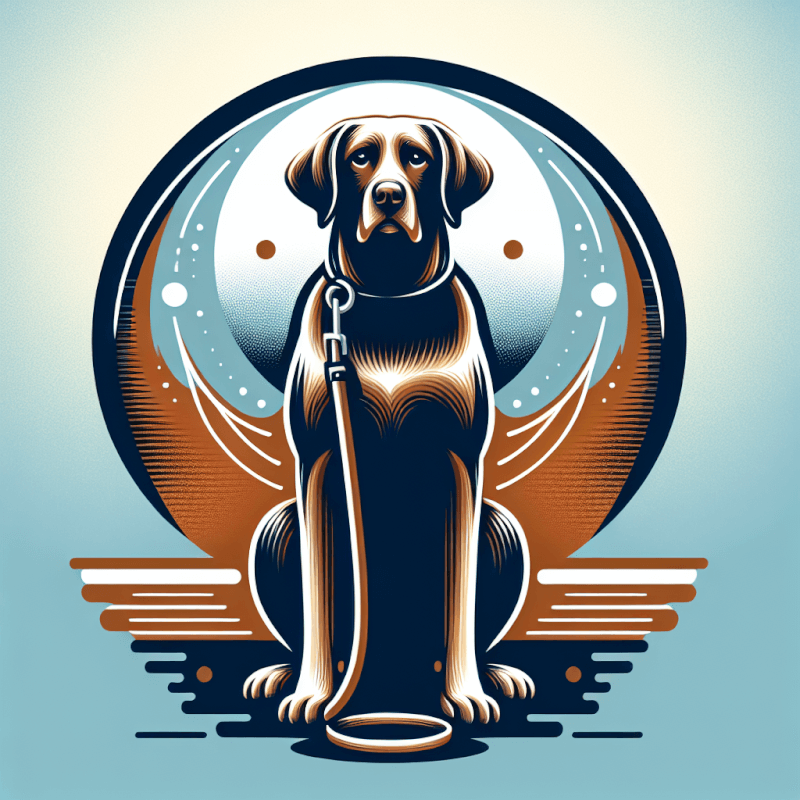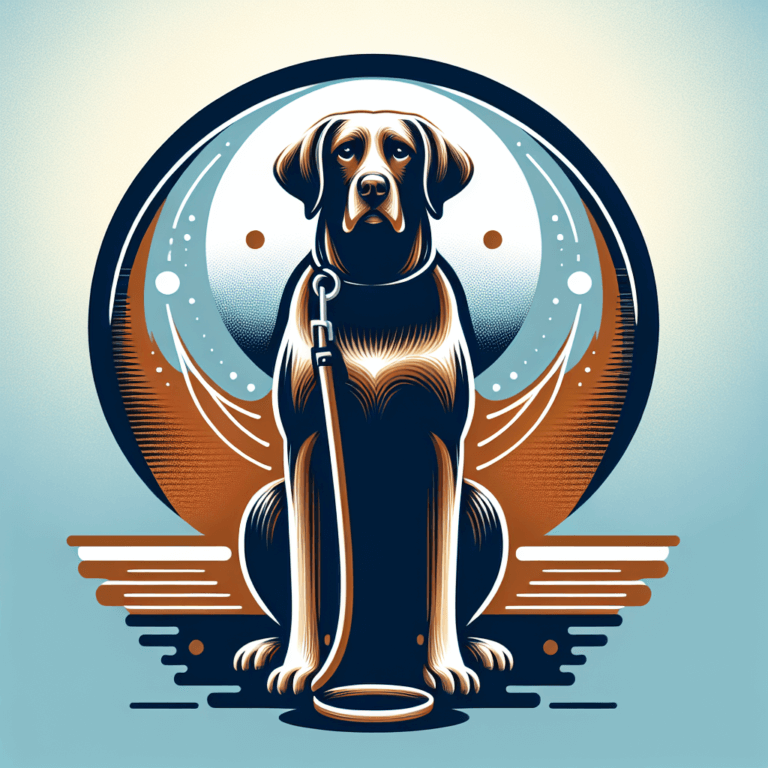In this article, we will explore effective strategies when dealing with your dog’s aggressive behavior. Whether it’s growling, biting, or displaying dominance, it can be concerning and challenging for any pet owner. However, by understanding the root causes and implementing proven techniques, you can create a harmonious and safe environment for both you and your furry friend. Discover how to navigate through this common issue, promoting positive behaviors and creating a more balanced relationship with your dog.
Understanding Aggressive Dog Behavior
Aggressive behavior in dogs can be concerning and challenging to deal with. It is important to understand the different types of aggression and the underlying causes in order to effectively address and manage this behavior. By recognizing the signs of aggression and seeking professional help, creating a safe environment, implementing positive reinforcement training, teaching basic commands, and employing behavior modification techniques, you can effectively manage and prevent aggressive behavior in your furry friend.
Ready for Cat Trivia?
Test your knowledge about cats!

Types of Dog Aggression
Aggression in dogs can manifest in various forms, such as fear aggression, territorial aggression, possessive aggression, and social aggression. Fear aggression occurs when a dog feels threatened or unsafe in certain situations. Territorial aggression is displayed when a dog feels the need to protect its territory. Possessive aggression is exhibited when a dog guards its possessions, such as toys or food. Social aggression occurs when a dog behaves aggressively towards other dogs or even humans. Understanding the specific type of aggression your dog is displaying can help in tailoring an appropriate training approach.
Causes of Aggressive Behavior
Aggressive behavior in dogs can arise from a combination of genetic, environmental, and situational factors. Genetics can play a role in predisposing certain breeds to aggression. Poor socialization and lack of proper training during a dog’s early life stages can also contribute to aggressive behavior. Additionally, traumatic experiences, past abuse, fear, anxiety, and medical conditions can all be underlying causes of aggression in dogs. Identifying the root cause of aggression is crucial in developing an effective behavior modification plan.
Recognizing Aggressive Behavior
Being able to recognize the signs of aggressive behavior in dogs is essential for early intervention and effective management. Some common signs include growling, snarling, snapping, biting, lunging, raised hackles, and intense staring. Aggressive dogs may also display stiff body language, ears pinned back, raised tail, and a defensive posture. It is important to pay attention to these signals and take appropriate measures to address the aggression before it escalates.
Getting Professional Help
Dealing with aggressive behavior in dogs can be overwhelming, and seeking professional help is highly recommended. A qualified dog trainer or veterinary behaviorist can provide expert guidance and develop a personalized behavior modification plan for your dog. They have the knowledge and experience to assess the underlying causes of aggression and implement appropriate training techniques. Choosing the right professional is crucial for successful behavior modification.
Choosing a Qualified Dog Trainer
When selecting a dog trainer to help with aggression issues, it is essential to find a qualified and experienced professional. Look for trainers who specialize in aggression and have a solid understanding of positive reinforcement training methods. Ask for recommendations from other dog owners or consult with your veterinarian. It is important to establish a good rapport with the trainer and ensure they have a positive approach towards behavior modification.

Working with a Veterinary Behaviorist
In some cases, the level of aggression exhibited by a dog may require the expertise of a veterinary behaviorist. These professionals are veterinarians who have undergone additional training in animal behavior. They can conduct thorough assessments, prescribe appropriate medications if necessary, and develop a comprehensive behavior modification plan. Working alongside a veterinary behaviorist can provide the best possible outcome for managing aggressive behavior in your dog.
Creating a Safe Environment
Creating a safe environment for an aggressive dog is crucial to prevent incidents and minimize triggers that may provoke aggressive behavior. Identifying potential triggers, securing fencing and gates, and creating safe zones within your home can help manage and reduce aggression.
Identifying Triggers
Understanding the specific situations or stimuli that trigger aggression in your dog is important for managing their behavior. Triggers can range from certain people or animals, loud noises, or specific environments. By identifying and avoiding these triggers as much as possible, you can significantly reduce the likelihood of aggressive episodes.
Securing Fencing and Gates
For dogs displaying territorial aggression, ensuring a secure fencing and gating system is essential. This helps prevent encounters with people or other animals outside of the property and minimizes opportunities for aggressive behavior. Regularly inspect and maintain any existing fences or barriers to ensure they are secure and in good condition.
Creating Safe Zones
Creating safe zones within your home provides your dog with a designated area where they can retreat to when feeling overwhelmed or anxious. These areas should be equipped with comfortable bedding, toys, and water. Safe zones provide a sanctuary for your dog and can help reduce stress and potential triggers that may lead to aggression.
Positive Reinforcement Training
Positive reinforcement training is a highly effective method for addressing and modifying aggressive behavior in dogs. It focuses on rewarding desired behaviors rather than punishing unwanted behaviors. By using treats, rewards, and clicker training, you can encourage your dog to display more appropriate behaviors and reduce aggression.

Understanding Positive Reinforcement
Positive reinforcement involves rewarding your dog for displaying desired behaviors. This can be done through treats, praise, or play. By rewarding good behavior consistently, your dog learns that certain actions lead to positive outcomes and is encouraged to repeat those behaviors.
Using Treats and Rewards
Treats and rewards are powerful motivators for dogs during training sessions. Use high-value treats that your dog finds particularly enticing to reinforce desired behaviors. Pair treats with verbal praise or a clicker as a marker for the specific behavior you wish to reward. This positive reinforcement helps shift your dog’s focus away from aggression and towards more appropriate responses.
Clicker Training
Clicker training is a technique that uses a small handheld device that makes a distinct clicking sound to mark desired behaviors. The clicker serves as a clear and precise signal to your dog that they have done something right and will be rewarded. Clicker training can be an effective way to shape your dog’s behavior and improve their response to training.
Teaching Basic Commands
Teaching your dog basic commands is an important part of their training, especially when dealing with aggression. These commands serve as a foundation for communication and can redirect your dog’s focus in situations that may trigger aggression.
Sit
The “sit” command is one of the most fundamental commands you can teach your dog. It helps establish impulse control and redirects their attention away from potential triggers. By teaching your dog to sit on command, you can prevent reactive or aggressive behavior.
Stay
The “stay” command is crucial for keeping your dog in one place and preventing them from approaching potentially challenging situations. It helps promote self-control and reduces the likelihood of aggressive encounters.

Come
The “come” command is essential for recall and getting your dog’s attention in situations where aggression may be triggered. By teaching your dog to come when called, you can redirect their focus and avoid potential conflicts.
Leave It
The “leave it” command is a valuable tool for redirecting your dog’s attention away from something they may find tempting but potentially dangerous or triggering. This command can prevent aggressive behavior when your dog becomes fixated on another animal or object.
Drop It
The “drop it” command is useful for preventing possessive aggression or resource guarding. By teaching your dog to release items on command, you can avoid potential conflicts when they have something they should not.
Addressing Aggression Triggers
Effective management and behavior modification involve addressing aggression triggers through desensitization, counterconditioning, and redirecting aggression.
Desensitization
Desensitization involves gradually exposing your dog to the triggers that usually provoke aggression in a controlled and calm manner. By starting with low-intensity versions of the trigger and gradually increasing exposure, your dog can become more comfortable and less reactive over time.
Counterconditioning
Counterconditioning aims to change your dog’s emotional response to specific triggers that typically elicit aggression. Through positive associations and rewards, you can help your dog develop a more positive and relaxed attitude towards these triggers. This can significantly reduce aggressive behavior.

Redirecting Aggression
Redirecting aggression involves providing your dog with alternative behaviors to engage in when they start to display aggression. For example, teaching them to fetch a toy or perform a specific command can redirect their attention and energy towards more positive outlets and away from aggression.
Behavior Modification Techniques
Behavior modification techniques can help manage aggressive behavior by removing rewards, implementing time-outs, leash training, and providing behavior replacements.
Removal of Rewards
The removal of rewards is an effective technique for discouraging aggressive behavior. If your dog displays aggression and receives attention, toys, or treats as a result, it reinforces the behavior. By withdrawing the reward when aggression occurs, you can communicate to your dog that aggression will not lead to positive outcomes.
Time-Outs
Time-outs involve removing your dog from a stimulating situation when they display signs of aggression. This helps them calm down and prevents the escalation of aggressive behavior. Place your dog in a designated, quiet area with no attention or stimulation until they have relaxed.
Leash Training
Proper leash training is essential for controlling an aggressive dog during walks or encounters with other dogs. It helps maintain distance and provides a sense of security, reducing the likelihood of aggressive behavior. Consistent leash training and use of a sturdy leash and harness are important for managing aggression.
Behavior Replacement
Behavior replacement involves teaching your dog alternative behaviors that are incompatible with aggression. For example, teaching your dog to sit when approached by strangers can provide a positive and non-threatening response. By replacing aggressive behaviors with more appropriate ones, you can effectively manage and reduce aggression.

Managing Aggressive Behavior
Managing aggressive behavior requires implementing strategies such as avoidance, providing physical and mental stimulation, addressing diet and nutrition, and establishing routine and structure.
Avoidance
Avoiding situations or triggers that provoke aggression is an important aspect of managing aggressive behavior. If you know certain environments, objects, or interactions provoke your dog, it is best to avoid them whenever possible. This reduces the likelihood of aggressive incidents and provides a safer environment for your dog and those around them.
Physical and Mental Stimulation
Ensuring your dog receives appropriate physical and mental stimulation can help prevent the buildup of excess energy that may contribute to aggressive behavior. Regular exercise, interactive play sessions, and mental enrichment activities are beneficial for redirecting their focus and promoting overall well-being.
Diet and Nutrition
Proper nutrition is essential for maintaining a balanced and stable temperament in dogs. Consult with your veterinarian to ensure your dog is receiving a high-quality diet appropriate for their age and breed. In some cases, dietary changes or supplements may be recommended to support behavioral health.
Routine and Structure
Establishing a routine and providing structure in your dog’s daily life can help reduce anxiety and create a sense of stability. Dogs thrive on consistency and predictability, and this can help them feel more secure and less inclined to respond aggressively. Set regular feeding times, exercise schedules, and training sessions to provide structure and a sense of control.
Preventing Aggression
Preventing aggressive behavior in dogs starts with early socialization, positive experiences, and providing proper exercise.
Early Socialization
Early socialization is crucial for helping dogs develop appropriate behaviors towards people, other animals, and various environments. Introduce your dog to different experiences, sounds, and stimuli from a young age, ensuring positive and rewarding interactions. This helps build their confidence and reduces the likelihood of fear-based aggression later in life.
Positive Experiences
Providing positive experiences throughout your dog’s life helps shape their overall temperament and behavior. Exposing them to new people, animals, and environments in a controlled and positive manner teaches them that these situations are not threatening, reducing the potential for aggression.
Proper Exercise
Regular exercise is essential for maintaining a balanced state of mind in dogs. It helps release excess energy, reduces stress, and promotes well-being. Adequate exercise tailored to your dog’s breed and age can prevent the buildup of frustration and potential triggers for aggressive behavior.
Dealing with Aggressive Encounters
In cases where your dog encounters another aggressive dog or there is an aggressive interaction with a person, it is important to prioritize safety, use proper handling techniques, and seek professional assistance if needed.
Safety Measures
When encountering an aggressive dog or situation, prioritize safety for both you and your dog. Maintain a safe distance, avoid direct eye contact, and do not attempt to intervene physically unless it is absolutely necessary. Carry a deterrent such as a loud whistle or pepper spray as a precautionary measure.
Proper Handling Techniques
When handling an aggressive dog, it is crucial to remain calm, confident, and assertive. Avoid shouting or punishing your dog as it may escalate the situation. Use a confident and firm voice to give commands and redirect their attention. If you are unsure about handling an aggressive situation, seek professional assistance to ensure your safety and that of your dog.
Seeking Professional Assistance
If dealing with aggressive behavior becomes overwhelming or if your efforts are not yielding the desired results, do not hesitate to seek professional assistance. A qualified dog trainer, veterinary behaviorist, or animal behaviorist can provide additional guidance, expertise, and support to help address and manage aggressive behavior effectively.
By understanding aggressive behavior in dogs, recognizing the different types, addressing the underlying causes, and implementing appropriate training techniques, you can transform your furry friend’s behavior and create a safe, harmonious environment. Seek professional help, create a secure environment, employ positive reinforcement training, teach basic commands, utilize behavior modification techniques, and establish routines to effectively manage and prevent aggressive behavior in your beloved companion. Remember, with patience, consistency, and the right approach, you can help your dog overcome aggression and lead a happier, more balanced life.


